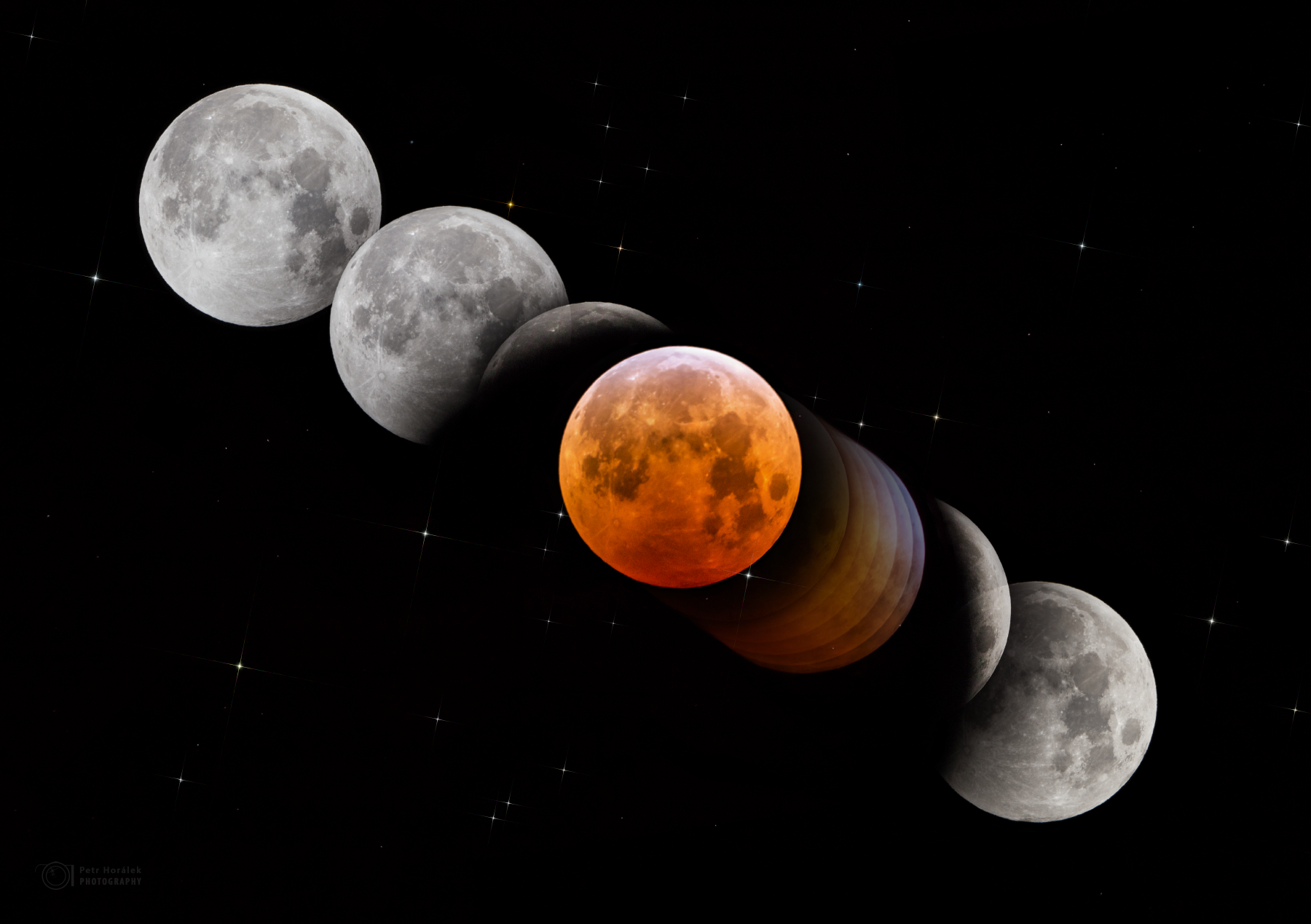
What happened with the Full Moon last night, on 8th October 2014? Well, nothing so special, but still pretty rare. Our big satellite was just “swimming” in the Earth’s shadow, producing the wonderful total lunar eclipse. If there wasn’t any atmosphere around our planet, we couldn’t breathe, but also the Moon wouldn’t be that colorful during its eclipse. Our atmosphere sends mostly reddish, but also a faint turquoise hue inside the shadow (the light comes from our Sun) and makes the phenomenon so colorful. I was so lucky in waiting for this eclipse in Lauder, New Zealand, where the weather was shortly perfect.
Even if I saw more colorful eclipse in my life, this one was unique too. Especially with not so far planet Uranus from the eclipsed Moon. But also with fact that this is the second one of very rare tetrad of total lunar eclipses in 2014 and 2015. Brightest star down left from the totally eclipsed Moon is WW Piscis – huge pulsing variable star. During the eclipse also occured several star occultations. The brightest (close to the lunar edge in the shadow) was SAO 109533 (HIP 4323) with 7,4 magnitude. In the telescope it was amazing view!
For the mosaic was used Canon 6D, Dobsonian reflector 0,20 m, f5, 4×1/1000 s, ISO 500 (partial eclipse) + 11×1/3 s, ISO 5000 (total eclipse). For the star background same telescope and camera, set on ISO 10000, exposure 1/4 s.




